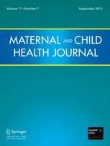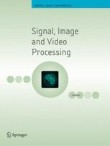Abstract
Background
Inadequate maintenance of a patient's airway represents a major cause of anesthesia-related morbidity and mortality. This study was designed to evaluate common preoperative clinical tests to determine the risk of difficult endotracheal intubation in apparent "normal" adult patients undergoing surgical procedures.
Methods
A prospective observational cohort study was performed on 160 consecutive adult patients undergoing surgical procedures at an academic medical center in Jordan from 20 May 2019 until 11 February 2020.
Preoperative assessment of airway risk stratification was performed by the following clinical tests: the mandible protrusion test (MPT), thyromental (TMD) and sternomental (SMD) distances, inter-incisor gap (IIG), and the modified Mallampati tests with tongue protrusion (MMT-TP) and without tongue protrusion (MMT-NTP). Grade C on the MPT, TMD ≤ 6 cm, SMD ≤ 12 cm, and MMT grades III and IV were considered to be predictors of difficult endotracheal intubations. A modified Cormack-Lehane grading (MCLG) of laryngoscopic views with backward, upward, and right-sided pressure on the thyroid and cricoid cartilages (BURP) maneuver was also documented, with grades 2B, 3, and 4 considered to be difficult airways for intubation.
Results
Fifteen patients (9.4%) were classified as MCLG 2B, 3, and 4, with age significantly associated with the MCLG grade (P = 0.028). The sensitivity and Youden's index of MMT-TP were found to be the lowest (40% and 0.29, respectively). The MPT was the most accurate and specific test (90.63 and 95.17%, respectively), with the highest PPV (50%), Youden's index (0.42), and area under the curve (AUC) (0.781). Bivariant analysis of MPT and the t-test of the mean TMDs and SMDs revealed significant associations between these airway tests and the difficulty of intubation (P values: < 0.001, 0.02, < 0.01, respectively).
Conclusion
The MPT, with its highest accuracy, specificity, positive predictive value, and good sensitivity may be used as a routine screening test for preoperative prediction of difficult endotracheal intubations.








